Last updated: April 18, 2023
Article
Inflation Structures, Lava-Rise Plateaus & Inflation Pits
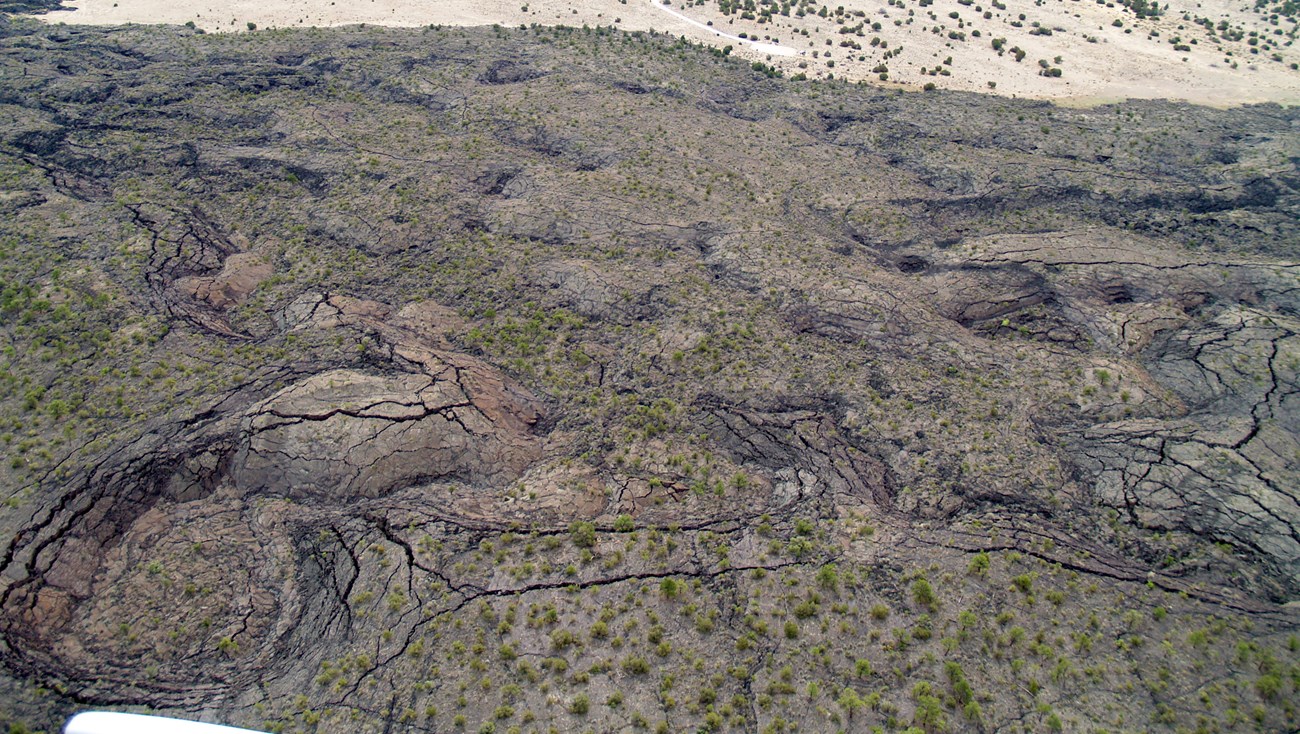
Photo courtesy of Larry Crumpler.
Introduction
Images of moving basaltic lava flows are among the most dramatic of those that show active Earth processes. These images may reveal incandescent interiors, new buds (toes) of lava breaking out at flow fronts, or rivers of lava flowing in surface channels or through skylights that peer into otherwise enclosed lava tubes. But some of the most important processes that occur during the emplacement of basaltic lava flows happen within the flows themselves, sometimes even after a flow front has stopped advancing or has slowed substantially.
Inflation is the process that occurs when lava continues to be supplied within a solidified crust of a basaltic lava flow, causing the flow surface to be lifted upward. Inflation can cause lava flows to substantially thicken and create other features such as tumuli, inflation pits, and inflation clefts to form.
Inflation mostly occurs only in pāhoehoe flows that were emplaced as sheets. Sheet flows may form in areas with gentle slopes. Flows inflate when lava supply exceeds its ability to spread laterally due to cooling and solidification of its surface and along its margins.
Inflation Structures
Tumulus
Tumuli (pl.) are small dome-shaped structures on flow surfaces that are usually less than 33 feet (10 m) high. They are formed when pressure within an inflating lava flow buckles the lava solidified crust. Molten lava may sometimes be squeezed out through cracks.
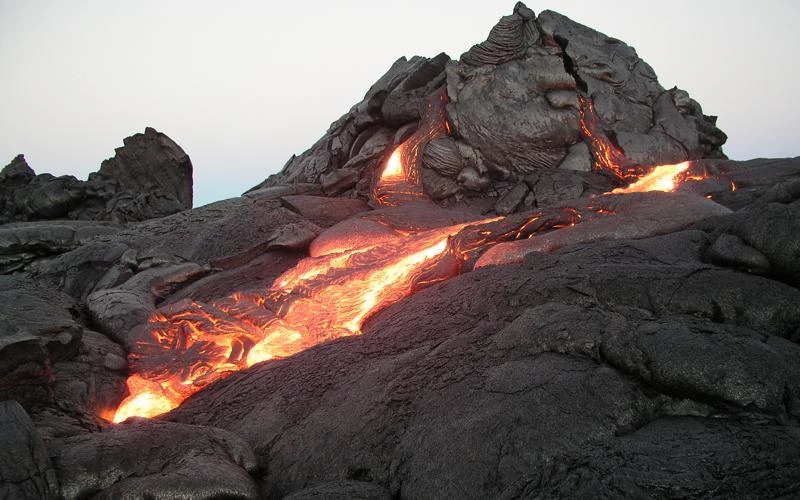
USGS photo.
Inflation Pits
Inflation pits (also known as lava-rise pits) are uninflated zones of an inflated flow where the solid upper crust and hardened bottom surface were not separated by further injection of liquid lava. They form when a lava encountered a topographic obstacle so that the flow is thinner above it. The thinner area solidified more quickly so that it was unable to inflate while the surface of the thicker lava flow rose all around it. Inflation pits are not produced by collapse of lava tubes.

Photo courtesy of Larry Crumpler.
Inflation Cleft
Inflation clefts are large factures formed during inflation. They are frequently found on the edges of inflation pits and near flow margins where the interior of the flow has uplifted relative to the thinner chilled edges of the flow that weren’t inflated.
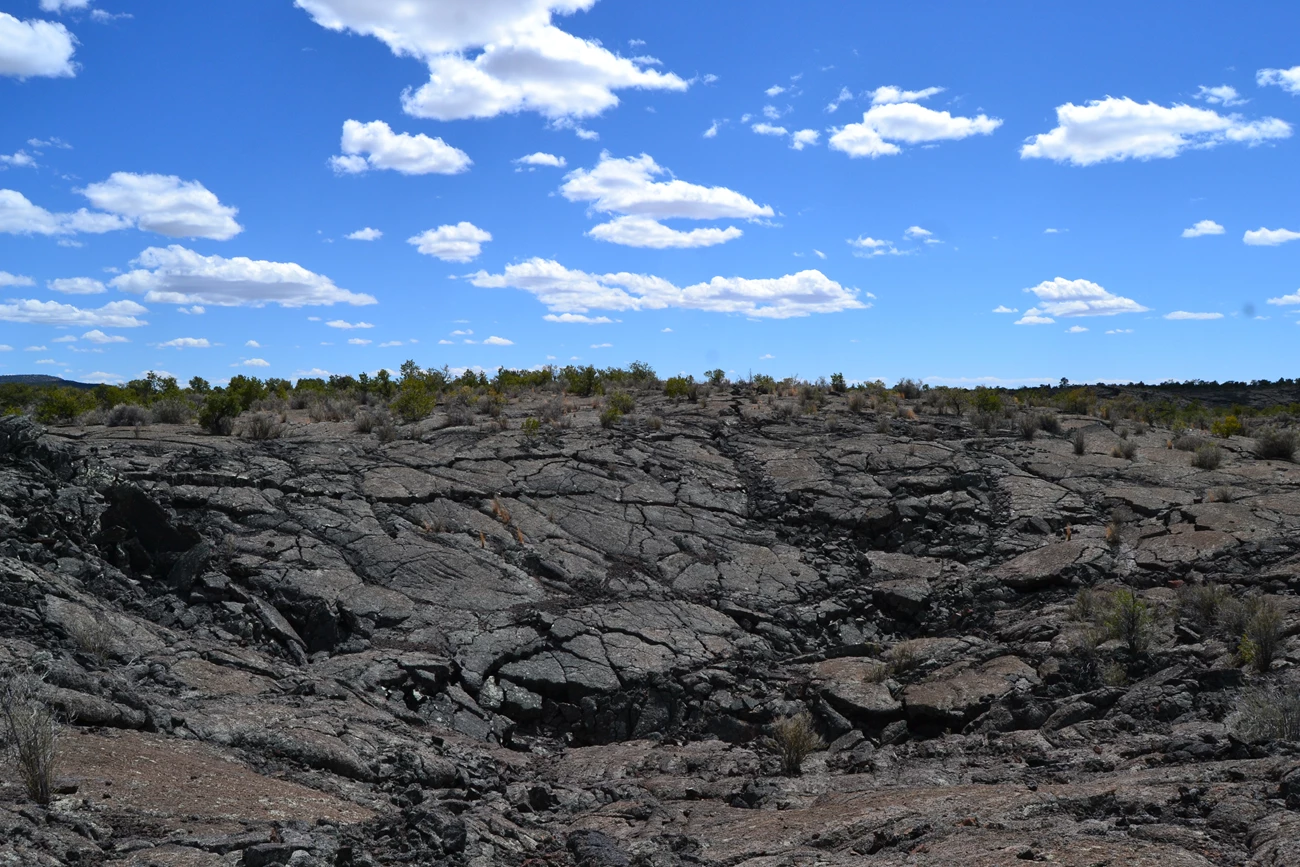
NPS photo by Maci MacPherson.
Rubbly Pahoehoe
Rubbly pāhoehoe forms when inflation causes the crust of a stagnant flow to break into pieces.

Photo courtesy of Larry Crumpler.
National Park Inflation Structures
At least five units of the National Park System contain inflation structures such as lava-rise plateaus and inflation pits, including:
Bering Land Bridge National Preserve
The Lost Jim lava flow in the Imuruk Lake Volcanic Field in Bering Land Bridge National Preserve was erupted between 1,000 and 2,000 years ago. Inflation of this lava flow caused features such as tumuli and inflation pits to form.

USGS AVO photo by Tim Orr.
Craters of the Moon National Monument
Inflation features including tumuli and inflation pits are present on several lava flows in Craters of the Moon National Monument.
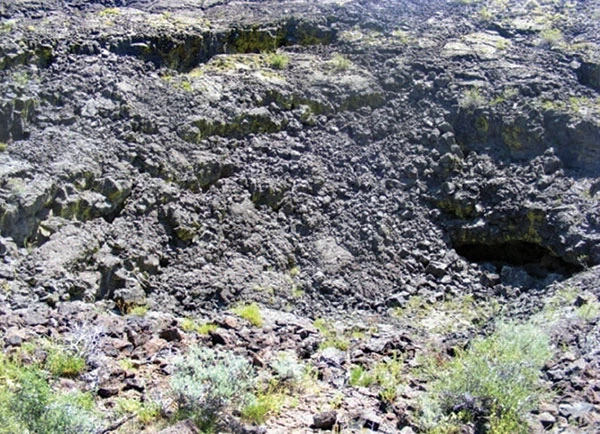
Niles JH and Others. 2011. Geologic Map of the Core Visitation Area of Craters of the Moon National Monument and Preserve, South-central Idaho, with Descriptions of 38 Points of Geologic Interest.
El Malpais National Monument
The youngest lava flow in the Zuni-Bandera Volcanic Field, the McCartys Flow, has been the subject of significant research into inflation processes and is also used as an Earth analogue to better understand lava flows on the moon and Mars.
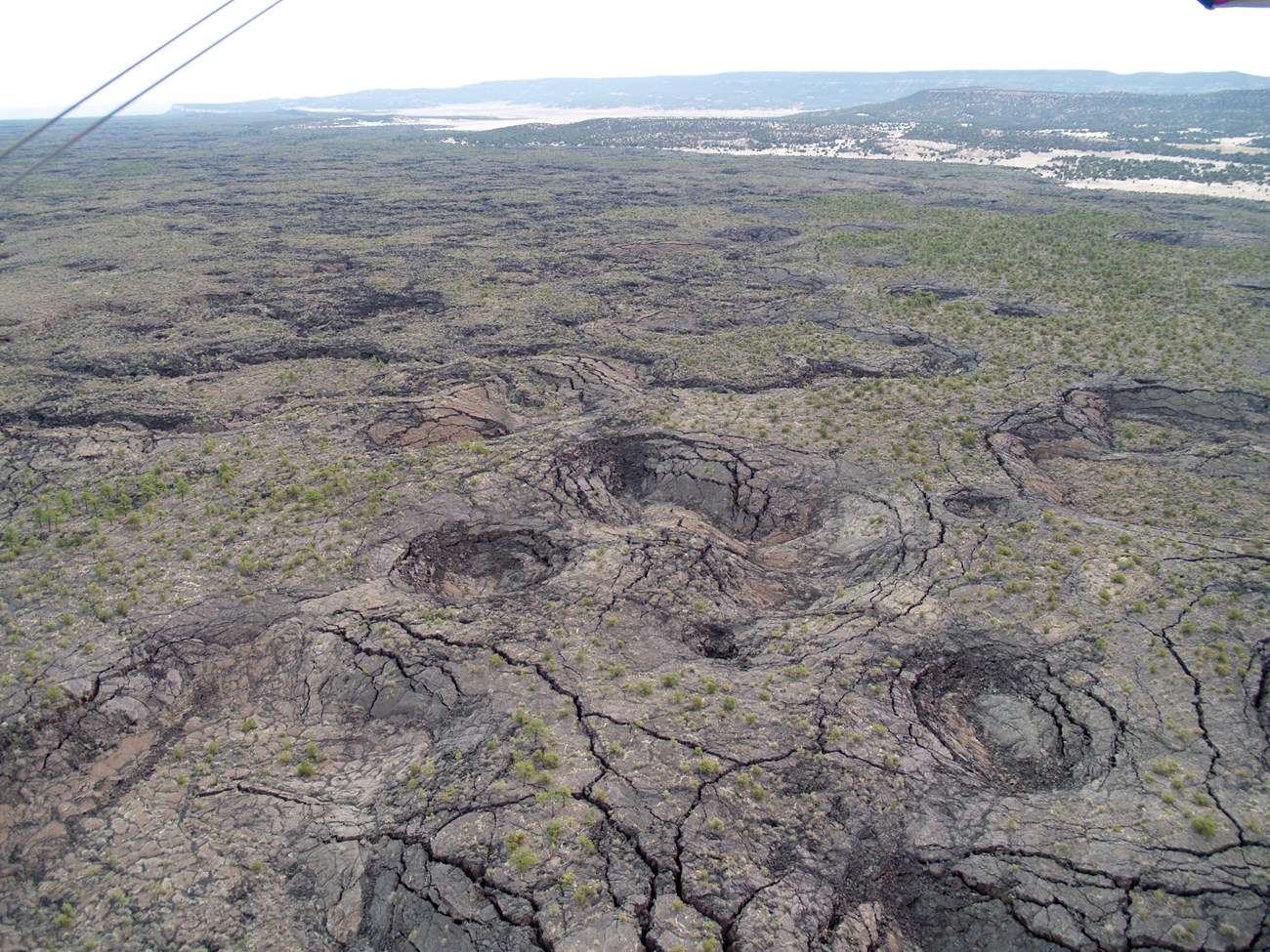
Photo courtesy of Larry Crumpler.
Featured Video
-
Supplemental information for "Lava-rise plateaus and inflation pits in the McCartys lava flow-field, New Mexico: An analog for pāhoehoe-like lava flows on planetary surfaces"
[Copyright © 2020 Christopher W. Hamilton. Distributed under the terms of the Creative Commons Attribution-NonCommercial-ShareAlike 4.0 International License (CC BY-NC-SA 4.0).]
Hawaii Volcanoes National Park
Many of the lava flows erupted from Kīlauea Volcano experience inflation, particularly after their flow fronts stop advancing. Inflation can be observed when the center portions of flows are higher and thicker than the front edges, and when tumuli and other structures are present.
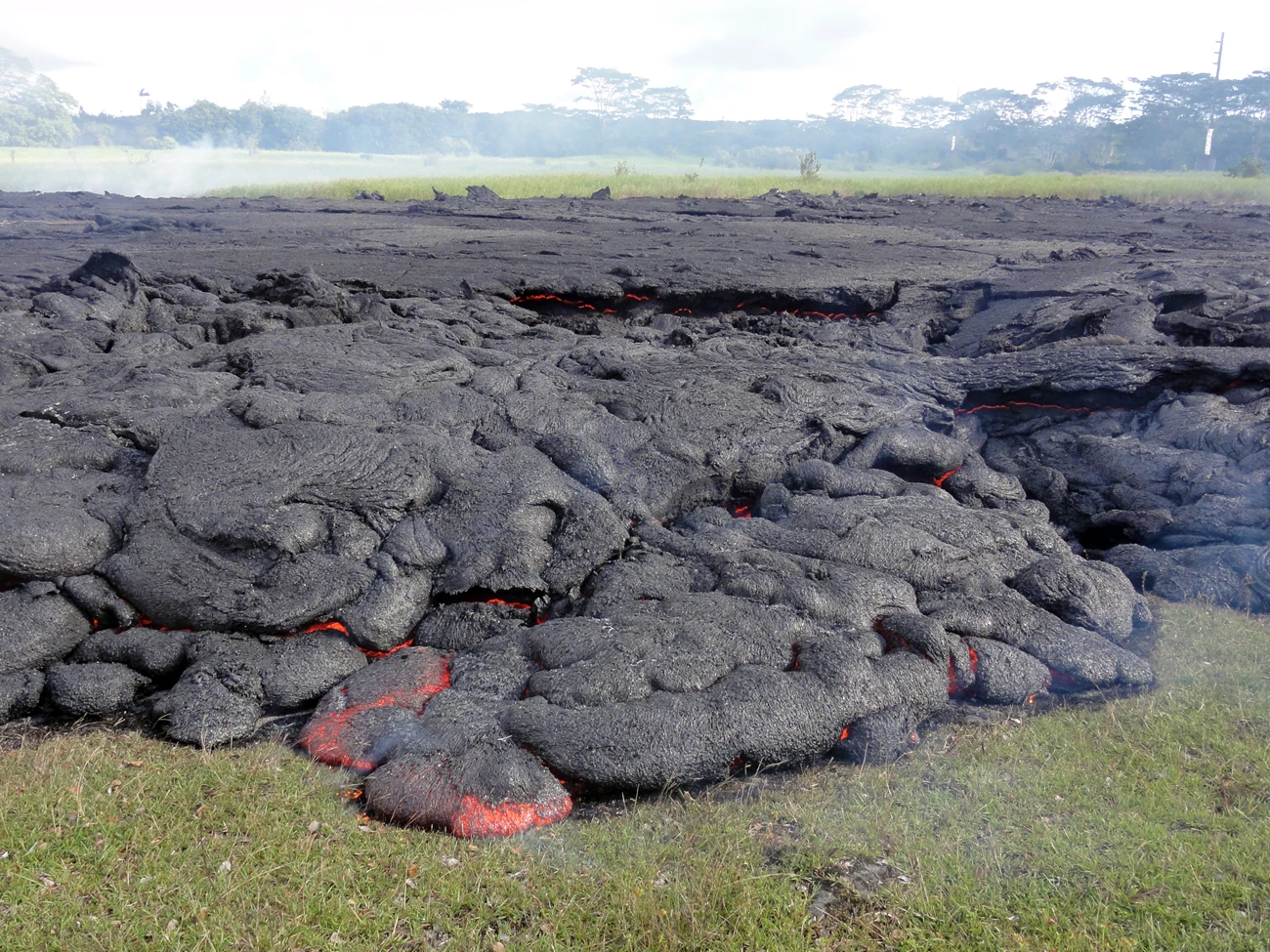
USGS HVO photo.
Lava Beds National Monument
The rugged terrain of the basalt of Mammoth Crater lava flow created a natural fortress known as Captain Jacks Stronghold in the Modoc War of 1872–1873. Tumuli and inflation pits in Captain Jacks Stronghold helped provide shelter for the Modoc warriors.
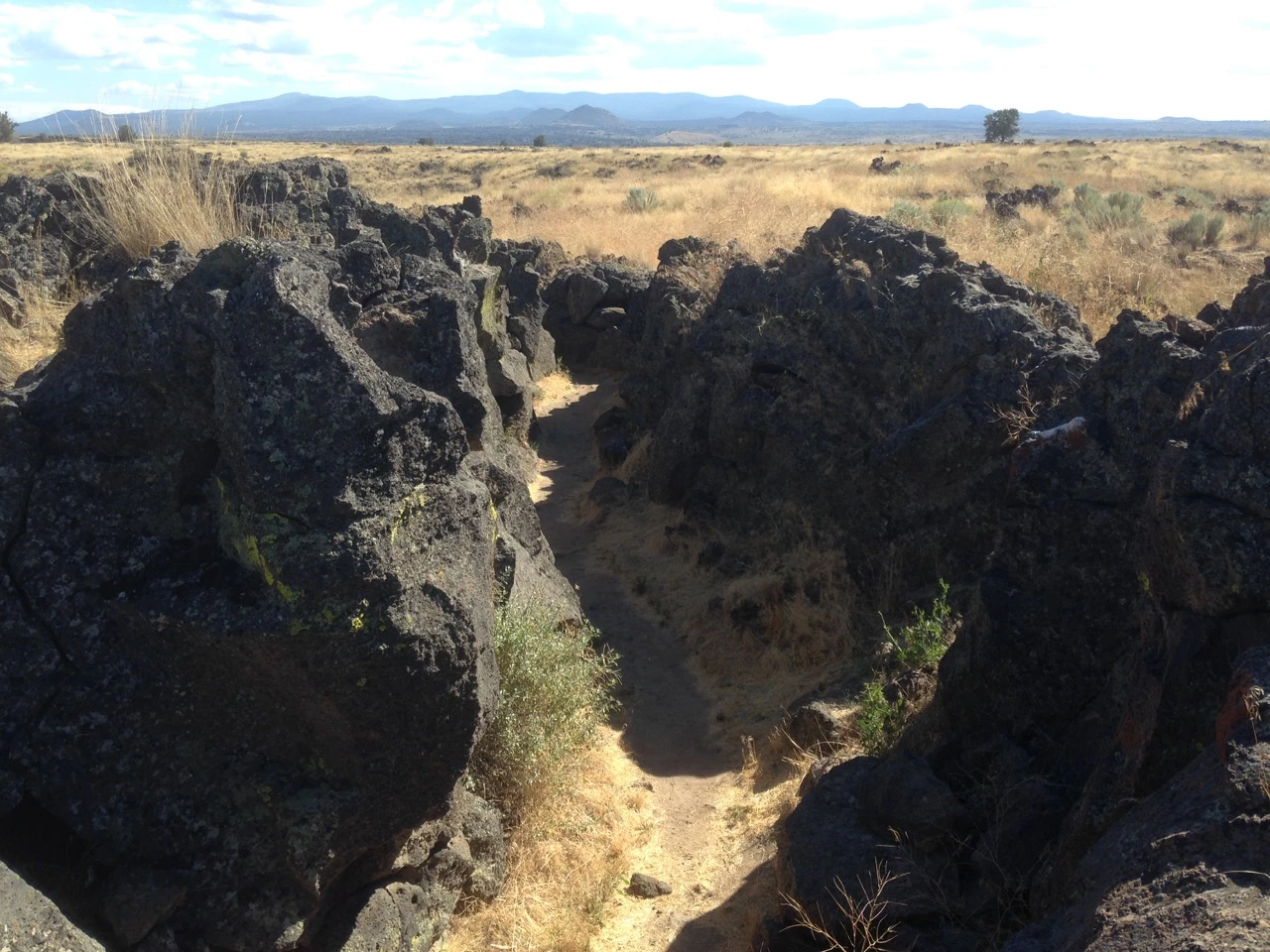
USGS photo by Julie M. Donnelly-Nolan.
National Park Sites Containing Inflation Structures
-
Bering Land Bridge National Preserve (BELA), Alaska—[BELA Geodiversity Atlas] [BELA Park Home] [BELA npshistory.com]
-
Craters of the Moon National Monument (CRMO), Idaho—[CRMO Geodiversity Atlas] [CRMO Park Home] [CRMO npshistory.com]
-
El Malpais National Monument (ELMA), New Mexico—[ELMA Geodiversity Atlas] [ELMA Park Home] [ELMA npshistory.com]
-
Hawai’i Volcanoes National Park (HAVO), Hawai’i—[HAVO Geodiversity Atlas] [HAVO Park Home] [HAVO npshistory.com]
-
Lava Beds National Monument (LABE), California—[LABE Geodiversity Atlas] [LABE Park Home] [LABE npshistory.com]
